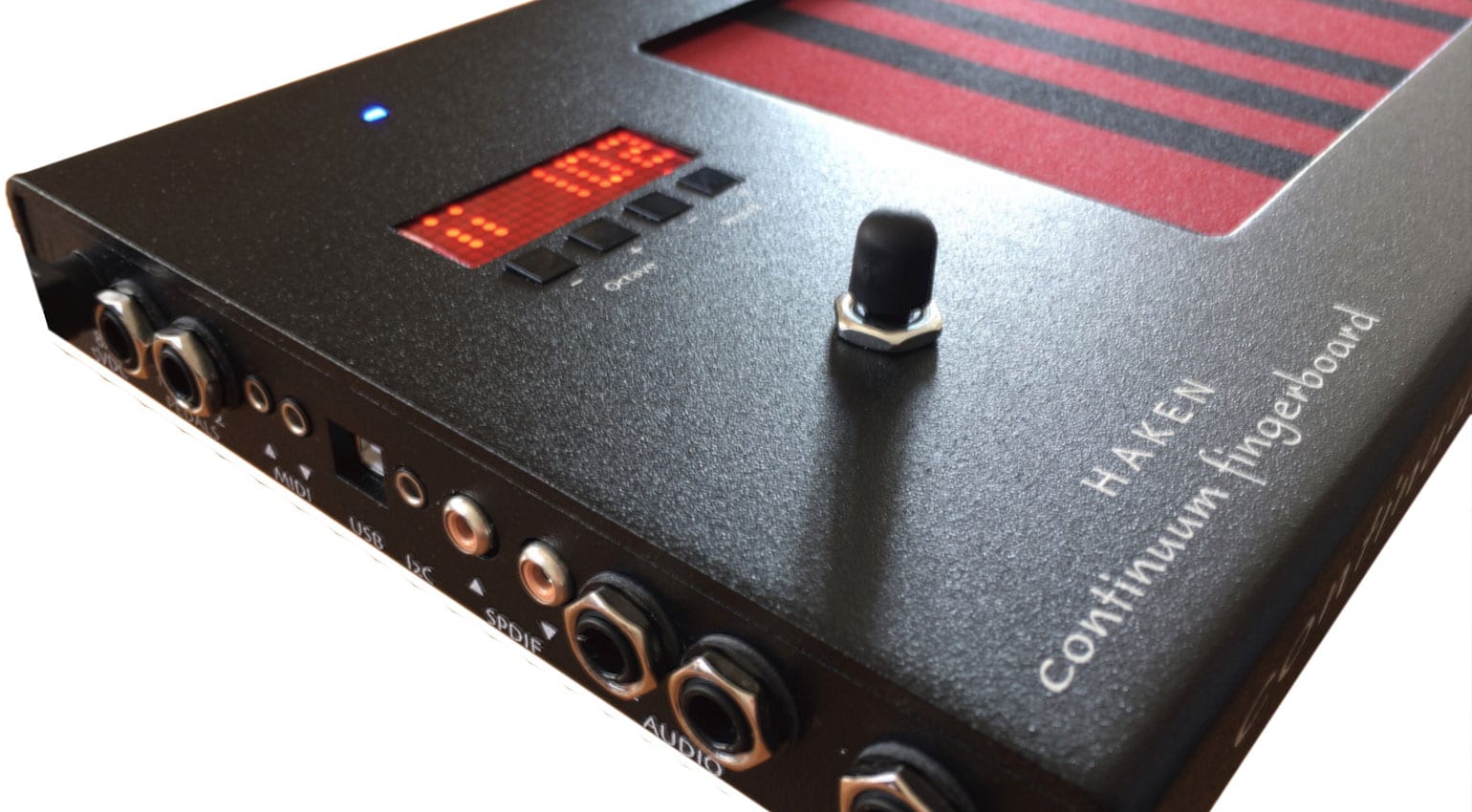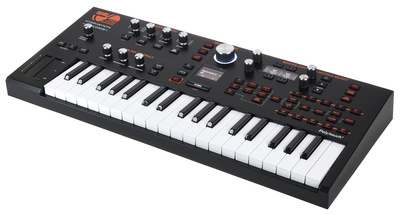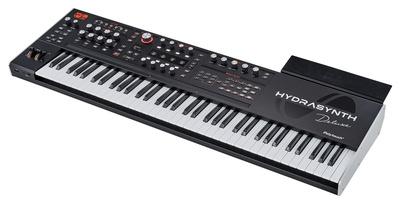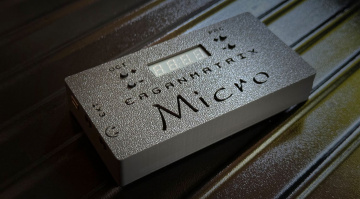MPE synthesizers – sensitive sound machines
There are a lot of synthesizer manufacturers who try to create ways for more sensitive control over the sound with a variety of MPE synthesizers. Let’s take a closer look at the different categories of MPE synthesizers out there!
How does sensitive playing work on MPE synthesizers?
MPE allows each individual synthesizer voice to be modulated independently. In most cases, at least tonal parameters can be changed per voice – ideally all of them. The MPE standard allows for up to 3 parameters per voice compared. As fewer and fewer synthesizers offer multimode, this function becomes all the more important.
What is new for musicians is that sounds can theoretically sound massively different through MPE modulation. The changes are usually made by playing the keyboard. MPE data can be recorded using a sequencer. However, the DAW you use or the hardware sequencer must support this data. Hapax and the most important DAWs (Ableton Live 11, etc.) currently do this.

In MPE, you get five dimensions when playing: pressure dynamics, velocity dynamics, and pressure in all directions (horizontally, vertically, and through pressure) within and on a key. Additional expressions include handwheels or joysticks, which could also act per voice. This is why there are methods in synthesizers to “select” these tones, such as “always the middle one” or “the one with the least pressure”. Particularly clever systems (currently only Osmose) are even able to control arpeggiators by recording and moving them through horizontal pressure without taking your hand off the keyboard.

A synthesizer with such sensitive expression possibilities should be played in the same way. However, if you are more of a “programmer” but still want to take advantage of the MPE, you can’t really edit the data in a way that makes sense. MPE is much more suited for playing musicians.
There are four types of MPE synthesizers
In the first category, you’ll find MPE synthesizers whose sound engines are more of an afterthought and where it is more about the way you play them. This is not meant to be derogatory, but you won’t find a synth like an Oberheim Xpander that sends and receives MPE. If you look past their sound engines, you get two very sensitive MPE controllers with the Haken synthesizer in the Osmose.

Type 2 are synthesizers that understand MPE but their keybeds only understand PolyPressure. This is the largest group. Type 1 MPE synthesizers can complement type 2 perfectly. Type 3 are synthesizers that tend not to offer any keyboard or they lack a high-quality keyboard in terms of touch sensors and MPE data acquisition, but they “understand” MPE. And then there are synthesizers that understand Polypressure but do not implement MPE.
Type 1: Haken fingerboard vs. …
Two devices should top this list of MPE synthesizers. Not because of their synthesis, since only a few parameters are actually changeable. Using the rather complicated Eagan matrix, up to three oscillators and some modules (filters, etc.) can be patched and connected in the Haken Slim. The dynamics perfectly affect the sound generation, but many people will still want to dock external synths for a broader and more defined sound palette.

The Haken Audio Fingerboard can also quantize between its keys and thus can be played very fluently, even with microtuning. It captures depth, pressure, and lateral deviations as well as movements. There is even a special module for the fingerboard to pass on up to four voices to your modular system as a CV.
For keyboard players, this involves quite a learning curve. But playing the Haklen evokes a different feeling. And it’s expensive but excellent.


… Expressive E Osmose
The Expressive E Osmose is even better for keyboard players who are not used to playing. It also includes the Eagan Matrix from Haken. Thanks to the display, you can adjust parameters more directly on the device. For longer, more expressive notes, ambient and dynamic playing, this is the most expressive system currently available.
My personal “first” choice is Osmose. After first demoing it, it was convincing without being exotic.


Category 2
Synthesis and sound are more important here. Only a few manufacturers can score points here. The focus is on additional parameters outside of traditional subtractive synthesis that can make a sound more interesting, such as the mutators in the Hydrasynth and the granular sampling features of the Waldorf platform. After all, you want to hear more than just Vangelis Blade Runner sounds!
These MPE synthesizers work best when combined with a controller like the Osose. Therefore, the desktop version is often preferable, as Osmose is superior to ANY other current synth or controller due to the two pressure zone levels.






With keys?
Nevertheless, it’s not bad to be flexible with the MPE synthesizers. That’s why there are additional suggestions here compared to in type 3.
The small Hydrasynth Explorer is particularly impressive, which still offers that despite its size. The larger ones offer the same in deluxe and “normal” versions. These include Waldorf’s Iridium/Quantum Engines, ASM Hydrasynth and UDO Gemini.






Category 3
In addition to the desktop versions of Waldorf’s Iridium, the “old” Quantum, and the ASM Hydrasynth Desktop, smaller manufacturers such as Baloran The River, Fred’s Lab Manatee, and GS Music e7, Melbourne Nina or the UDO Super 6 Desktop are also MPE-compatible.
Exotics such as the GR-1 granular synthesizer and its big brother, the Kodamo Essence FM, Isla Caladan and its predecessor Parva (one of the first to be MPE-compatible), the Black Corporation synths, as well as other synths listed here, are among the most sensitive of our time.








Be aware that the more interesting synthesizers tend to be the ones that don’t have classical origins. Sequential, Black Corp., and the like have a wonderful sound and a great engine. But changing granular FM and other elements is a step up if you can change them sensitively. That’s where you usually end up with Waldorf, Ashun Sound Machines, and so forth.








Originally published at Gearnews.de by Moogulator. Translation by Julian Schmauch.
More about MPE Synthesizers:
* This post contains affiliate links and/or widgets. When you buy a product via our affiliate partner, we receive a small commission that helps support what we do. Don’t worry, you pay the same price. Thanks for your support!
One response to “MPE synthesizers – sensitive sound machines”

 4,5 / 5,0 |
4,5 / 5,0 | 









No linnstrument ?
No Nymphes ?